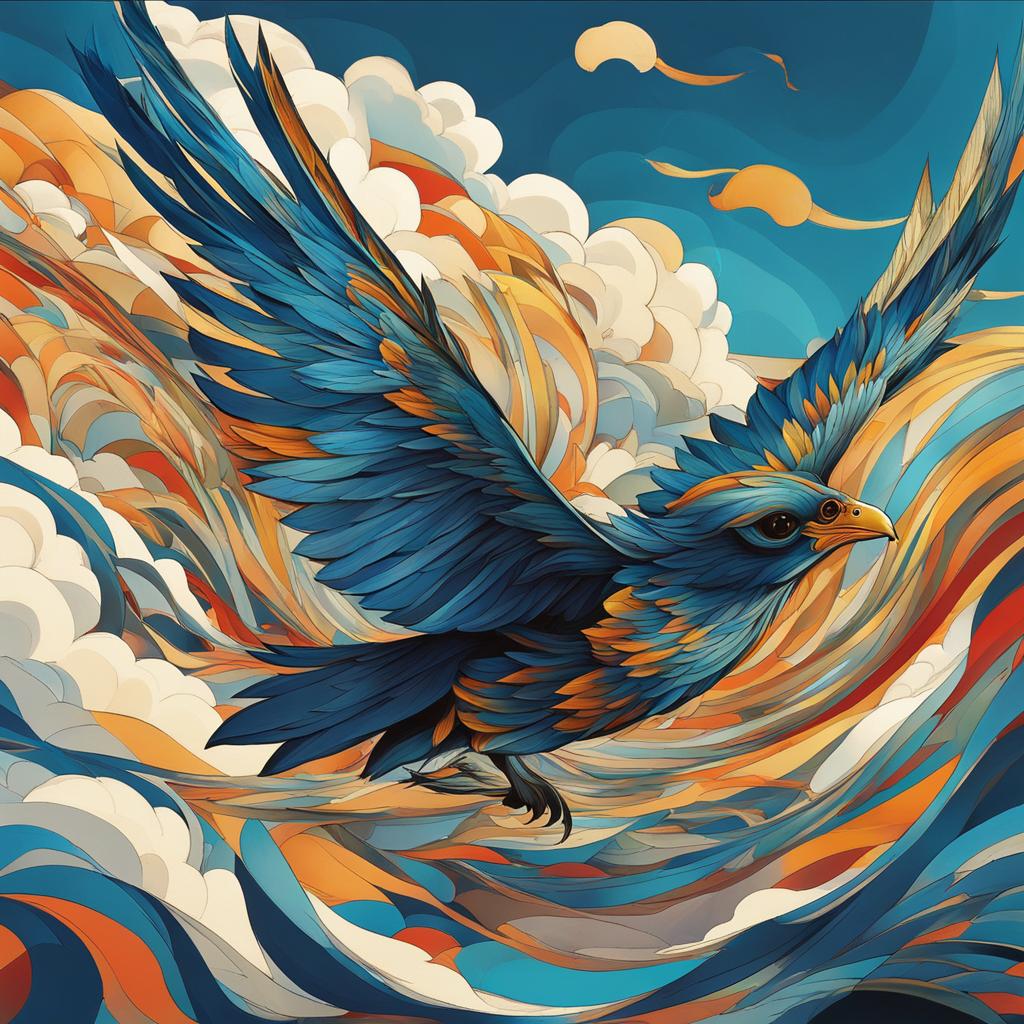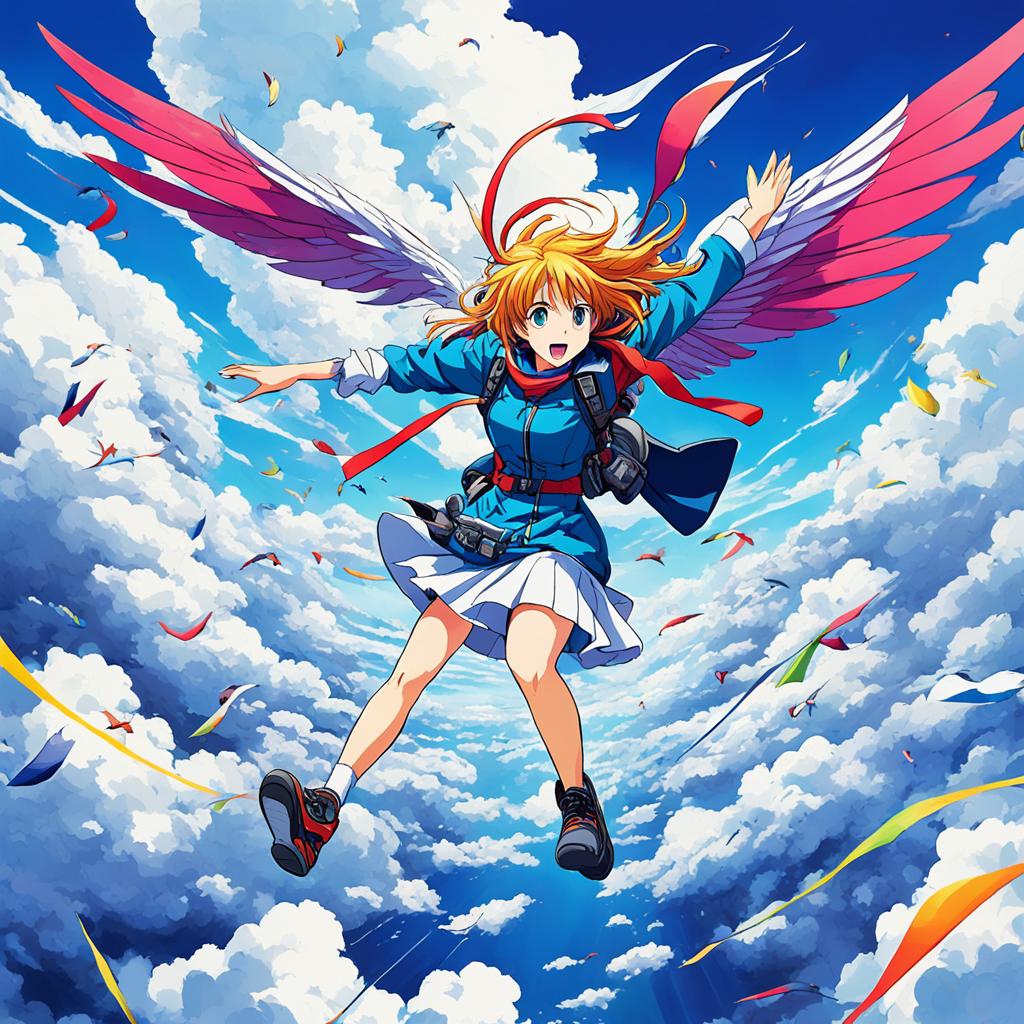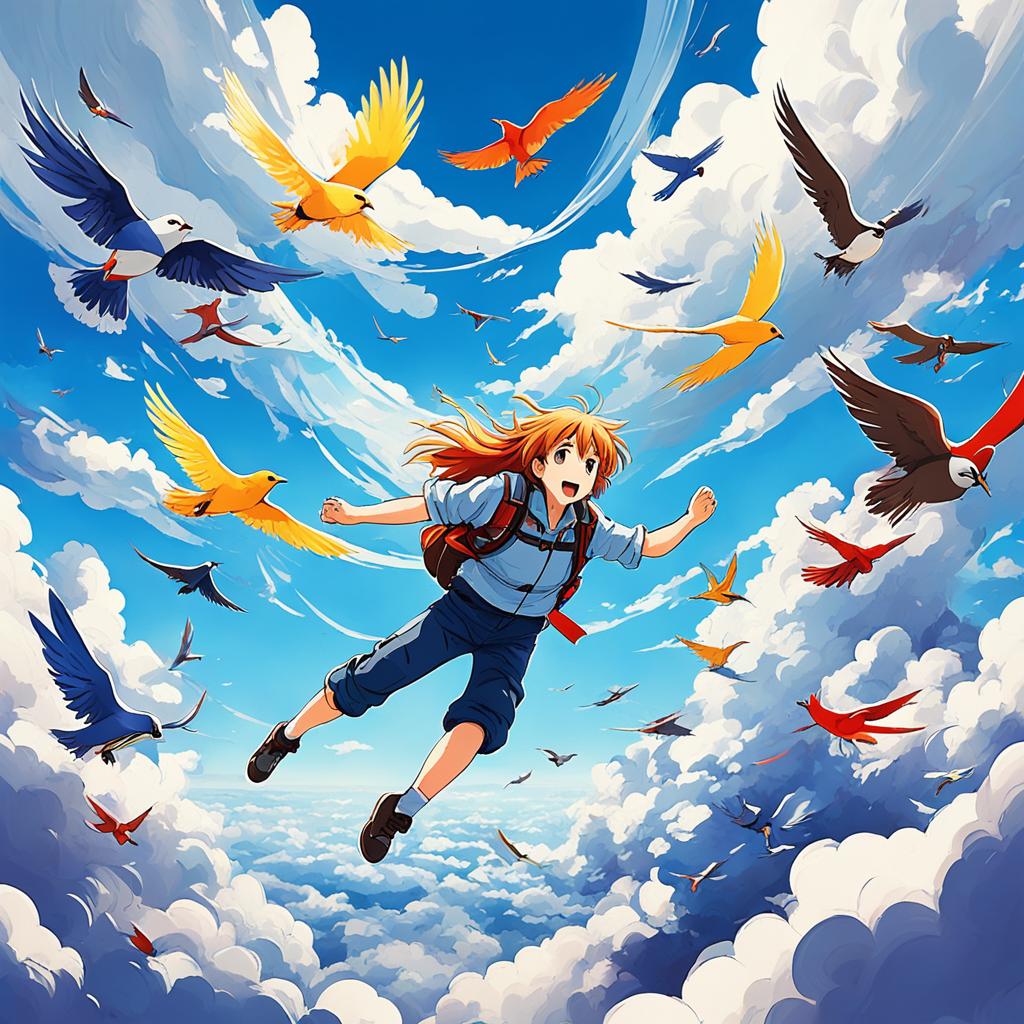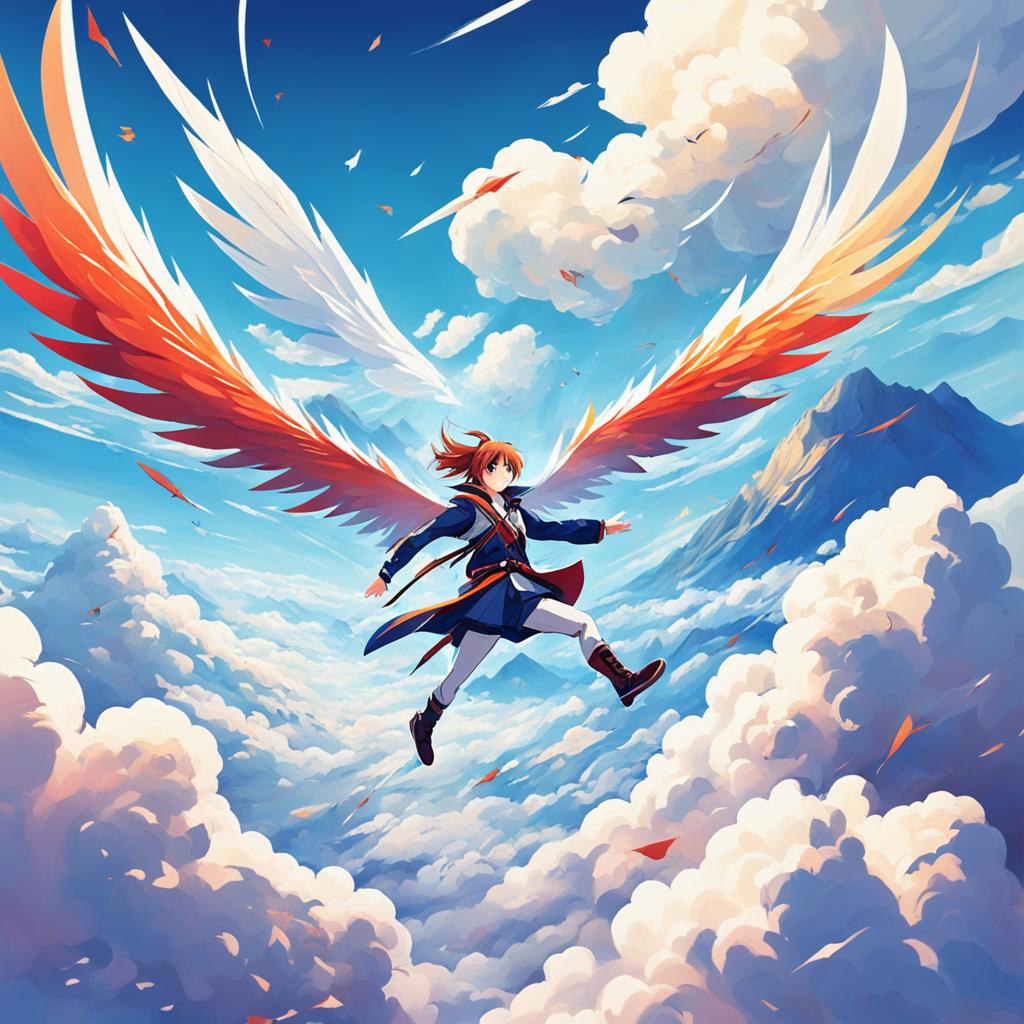Have you ever wondered what it feels like to soar through the skies, leaving the world behind? To experience the exhilaration of flight and the freedom it brings? The poem “High Flight” by John Gillespie Magee Jr. captures these emotions and more. But what is the message behind this iconic piece of aviation literature?
Summary of “High Flight”

“High Flight” is a captivating sonnet written by John Gillespie Magee Jr., an esteemed World War II Royal Canadian Air Force fighter pilot. The poem eloquently captures the exhilaration and liberation experienced through flight. Magee utilizes skillful poetic techniques, including alliteration, sibilance, and personification, to vividly depict the enchanting sensations of soaring through the skies. The poem conveys a profound spiritual connection to the divine and a remarkable transcendence of earthly constraints.
Within the lines of “High Flight,” Magee’s literary craftsmanship beautifully encompasses the essence of flight, evoking a sense of awe and wonder. The poem’s rhythmic flow and captivating imagery draw the reader into a world where constraints dissipate, and freedom becomes a tangible reality. The enchanting journey depicted in the poem offers a glimpse into a realm unbound by earthly limitations, touching upon the profound and ethereal.
Through the skillful use of poetic techniques, Magee brings the experience of flight to life. Alliteration and sibilance create a lyrical quality, enhancing the musicality of the poem. The personification of elements related to flight adds depth and relatability, forging a connection between the reader and the soaring sensations described within the verses.
“High Flight” captivates readers with its evocative language and powerful imagery. As the poem unfolds, it paints a vivid picture of the transformative power of flight, reminding us of the sheer beauty and wonder that lies beyond our earthly boundaries.
Structure of “High Flight”
The poem “High Flight” by John Gillespie Magee Jr. follows a structured format that enhances the flow and impact of the message. It consists of three stanzas with a total of fourteen lines, making it a sonnet. The first two stanzas adhere to an ABAB CDCD rhyme scheme, while the third stanza has a rhyme scheme of EFEGFG. This consistent rhyme pattern creates a sense of rhythm and musicality throughout the poem.
Magee’s deliberate use of the sonnet structure adds to the overall impact of “High Flight.” Sonnets are often associated with love and passion, but in this case, the poet utilizes the traditional form to convey the exhilaration and spiritual connection that comes with flight. By adhering to the structure of a sonnet, Magee expertly blends form and content to evoke powerful emotions in the reader.
Furthermore, Magee consistently uses ten syllables per line, known as iambic pentameter, which is a characteristic of sonnets and adds to the rhythmic quality of the poem. This regular meter contributes to the overall musicality and emphasizes the poet’s intent.
The structure of “High Flight” not only showcases Magee’s skill as a poet but also serves as a vehicle to convey the awe-inspiring experience of flight. By adhering to the sonnet format and utilizing consistent rhyme and meter, Magee’s poem captivates readers and immerses them in the beauty and freedom of soaring through the skies.
| Structure | Description |
|---|---|
| Stanzas | Three stanzas |
| Lines | Fourteen lines |
| Rhyme Scheme (Stanza 1 and 2) | ABAB CDCD |
| Rhyme Scheme (Stanza 3) | EFEGFG |
| Syllables per Line | Ten syllables (iambic pentameter) |
Poetic Techniques in “High Flight”

John Gillespie Magee Jr. masterfully employs a range of poetic techniques in his poem “High Flight,” enhancing the imagery and evoking strong emotions. These techniques include:
- Alliteration: Magee skillfully uses alliteration to create musical and rhythmic effects, adding beauty and emphasis to the lines. For example, in the phrase “slipped the surly bonds,” the repetition of the “s” sound creates a soft and soothing tone, evoking a sense of serenity.
- Sibilance: The poet also employs sibilance, a type of alliteration that focuses specifically on the repetition of the “s” sound. This technique adds a hissing or whispering quality to the language, enhancing the sensory experience. An example of sibilance in “High Flight” is the phrase “silently, almost invisibly.”
- Enjambment: Magee utilizes enjambment in “High Flight,” which means that a thought or idea continues from one line to the next without a pause or punctuation. This technique creates a sense of fluidity and momentum in the poem, mirroring the feeling of flight itself. An example of enjambment can be seen in the lines “And, while with silent lifting mind I’ve trod / The high untrespassed sanctity of space.”
- Personification: The poet employs personification, attributing human qualities to non-human elements, to bring the elements of flight to life and make the experience more relatable. In “High Flight,” Magee personifies the sky as “triumphantly blue,” giving it a sense of agency and magnificence.
These poetic techniques work harmoniously to immerse the reader in the experience of flight, evoking strong emotions and enhancing the overall impact of “High Flight.”
| Poetic Technique | Example |
|---|---|
| Alliteration | “slipped the surly bonds” |
| Sibilance | “silently, almost invisibly” |
| Enjambment | “And, while with silent lifting mind I’ve trod / The high untrespassed sanctity of space” |
| Personification | “triumphantly blue” |
Analysis of “High Flight”

In analyzing “High Flight,” it becomes apparent that the poem celebrates the exhilaration and sense of transcendence that accompany the act of flying. Magee employs vivid imagery, powerful poetic techniques, and a recurring theme of leaving earthly limitations behind to convey his message effectively.
The poem opens with the imagery of soaring through the skies, embodying the freedom and joy of flight:
Oh! I have slipped the surly bonds of Earth
And danced the skies on laughter-silvered wings;
Sunward I’ve climbed, and joined the tumbling mirth
Of sun-split clouds – and done a hundred things
You have not dreamed of – wheeled and soared and swung
High in the sunlit silence. Hov’ring there,
I’ve chased the shouting wind along, and flung
My eager craft through footless halls of air.
The imagery of slipping the “surly bonds of Earth” evokes a powerful sense of liberation and escape from the confines of the terrestrial world. The speaker’s description of dancing through the skies on wings bathed in laughter captures the sheer joy and exhilaration of flight.
Magee’s use of poetic techniques further enhances the impact of the poem. The alliteration in “laughter-silvered wings” and “sunward I’ve climbed” creates a musical quality that resonates with readers. The repetition of consonant sounds in these phrases accentuates the fluidity and grace of flight.
Furthermore, the personification of the sun-split clouds, the shouting wind, and the footless halls of air infuses the elements of flight with agency and life. This personification not only amplifies the sensory experience of flying but also reinforces the theme of the transcendence of earthly limitations.
Among the most striking lines of the poem is the declaration of having “touched the face of God.” This phrase reaches the pinnacle of the speaker’s experience, capturing the profound spiritual connection that comes from being elevated above earthly concerns. It suggests an encounter with the divine and a deep sense of awe.
Magee successfully paints a vivid picture of the transcendent experience of flight through his skillful use of imagery and poetic techniques. The poem leaves readers with a heightened appreciation for the beauty, freedom, and spiritual connection that flying can bring.
Origins of “High Flight”
“High Flight” is a poem that was written by John Gillespie Magee Jr. in September 1941. Magee, a World War II Royal Canadian Air Force fighter pilot, was inspired to write the poem after experiencing the sensation of flight firsthand. During his time as a pilot, Magee was captivated by the freedom and exhilaration that came with soaring through the skies.
Magee’s inspiration for the final line of the poem, “touched the face of God,” came from another poem called “The Blind Man Flies” by Cuthbert Hicks. This powerful line adds a spiritual dimension to “High Flight” and highlights the awe-inspiring nature of flight.
Initially, Magee’s poem was published in St. John’s Episcopal Church’s newsletter, where his father served as a minister. The publication of “High Flight” in this humble church publication was the beginning of its journey towards recognition. Over time, the poem gained popularity and acclaim, becoming Magee’s most well-known work.
Today, “High Flight” continues to resonate with audiences all over the world, capturing the essence of flight and the transcendence it brings. It stands as a testament to the indomitable spirit of aviators and their connection to something greater than themselves.
Legacy of “High Flight”
The poem “High Flight” by John Gillespie Magee Jr. has left a lasting legacy in the realm of aviation literature. Its powerful words and vivid imagery have made it an iconic piece, symbolizing the essence of flight – freedom, beauty, and transcendence. This poem holds a special place and continues to inspire pilots and aviation enthusiasts worldwide.
Aviation-related events and memorials often feature recitations of “High Flight” as a way to honor the spirit of flight and pay tribute to those who have dedicated their lives to the skies. The poem’s timeless message resonates deeply, reminding everyone of the awe-inspiring experience of flying and the profound connection it fosters with the heavens above.
Magee’s words serve as a testament to the indomitable human spirit, triumphing over the earthly limitations that bind us. The legacy of “High Flight” extends far beyond the confines of its original publication. It has become an embodiment of the dreams, aspirations, and untamed desire to explore the vast expanse of the skies.
Today, “High Flight” stands as an emblem of the aviation community, capturing the essence of what it means to soar through the clouds and touch the face of God. Its impact on generations of pilots and its enduring popularity have solidified its status as an immortal piece of literature, forever etched in the hearts and minds of all who cherish the wonders of flight.
FAQ
Q: What is the message of the poem “High Flight”?
A: The message of the poem “High Flight” is about the joy, freedom, and spiritual connection that comes from leaving the earth behind and soaring through the skies.
Q: What is the summary of “High Flight”?
A: “High Flight” is a sonnet written by John Gillespie Magee Jr., a World War II Royal Canadian Air Force fighter pilot. The poem vividly depicts the exhilaration of flight and the sense of liberation it brings.
Q: What is the structure of “High Flight”?
A: “High Flight” is a three-stanza poem with a total of fourteen lines, following a ABAB CDCD EFEGFG rhyme scheme. Magee consistently uses ten syllables per line, which is a characteristic of sonnets.
Q: What are the poetic techniques used in “High Flight”?
A: The poetic techniques used in “High Flight” include alliteration, sibilance, enjambment, and personification. These techniques enhance the imagery and evoke strong emotions in the reader.
Q: What is the analysis of “High Flight”?
A: “High Flight” celebrates the exhilaration and sense of transcendence that come with flight. Magee’s use of vivid imagery, poetic techniques, and the overarching theme of leaving earthly bonds behind contribute to the message of the poem.
Q: What are the origins of “High Flight”?
A: “High Flight” was written by John Gillespie Magee Jr. in September 1941. Magee was inspired to write the poem after experiencing the sensation of flight as a fighter pilot in World War II.
Q: What is the legacy of “High Flight”?
A: “High Flight” has become an iconic poem, representing the freedom, beauty, and transcendence of flight. It is often recited at aviation-related events and continues to inspire pilots and aviation enthusiasts worldwide.
